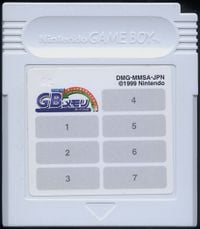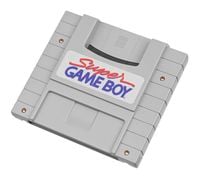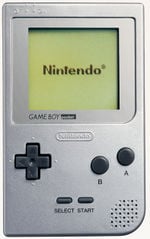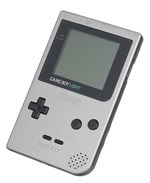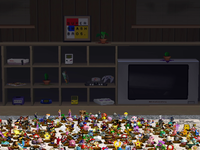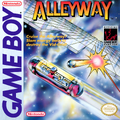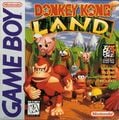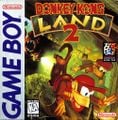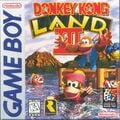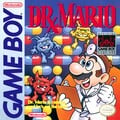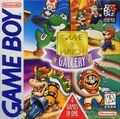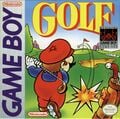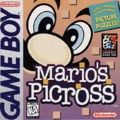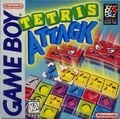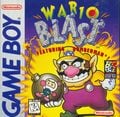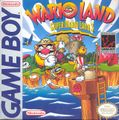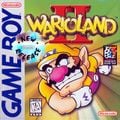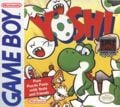Game Boy: Difference between revisions
No edit summary |
|||
| Line 158: | Line 158: | ||
*To commemorate the 100th issue of [[Nintendo Power]] an exclusive golden Game Boy Pocket with a Nintendo Power logo and a 100 next to the system's logo was bundled with the issue. | *To commemorate the 100th issue of [[Nintendo Power]] an exclusive golden Game Boy Pocket with a Nintendo Power logo and a 100 next to the system's logo was bundled with the issue. | ||
*This is the first Nintendo console that can play some of its [[Game Boy Color|successor's]] games, albeit in gray scales. | *This is the first Nintendo console that can play some of its [[Game Boy Color|successor's]] games, albeit in gray scales. | ||
*The screen color on the Original Game Boy is later used as an alternate costume for [[Mr. Game & Watch]] in ''[[Super Smash Bros. Brawl]]'' and ''[[Super Smash Bros. for Nintendo 3DS / Wii U]]''. | |||
{{BoxTop}} | {{BoxTop}} | ||
{{NIWA|NWiki=1}} | {{NIWA|NWiki=1}} | ||
Revision as of 16:12, April 20, 2017
It has been requested that this article be rewritten and expanded to include more information.
Template:System-Infobox Template:LLQuote
The Game Boy is Nintendo's second handheld console. The Game Boy is one of the best selling game systems of all time, containing a processor 2.345x faster than the NES and selling around 64,420,000 units worldwide. It was so popular that Nintendo actually pushed back production of the Game Boy Color. It was discontinued in 1999 but is famous to collectors. It is the handheld counterpart of the NES and SNES. It has 8-bit graphics (similar to the NES).
The Game Boy has the ,
,
and
buttons and the
which make the controls similar to that on the NES. In 1995 a new version of the Game Boy, as part of Nintendo's "Play It Loud!" campaign, was released. This version is exactly the same as the original; the only difference is the color of the system. Game Boy games are also avalable on the Nintendo 3DS Virtual Console.
Hardware Specifications
- CPU: Z80 8-bit CMOS
- CPU Speed: 4.19 Mhz
- RAM: 8 Kbyte
- Maximum Resolution: 160 x 144 pixels
- Colors: Grayscale (four shades of gray; olive green in some cases) (in Color, they get 32,768 colors + 56 colors maximum on screen)
- Maximum sprite size: 8 x 16 pixels
- Maximum number of sprites on screen: 40 sprites, 10 per line
- Minimum/Maximum cart size: 256 Kbit - 16 Mbit
- Sound: 4 Channel
Compatibility
Here's a compatibility chart. Any game only for Game Boy Color will boot but refuse to play further.
| Example Cartridge | Usual Color | Game Boy mode | Compatible | |
|---|---|---|---|---|
| Original Game Boy cartridge | 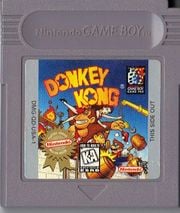
|
Grey | ||
| Game Boy Color cartridge (Black) | 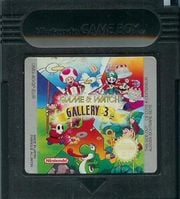
|
Black | ||
| Game Boy Color cartridge (Clear) | 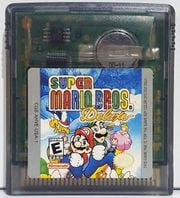
|
Clear |
Accessories
Game Link Cable
Template:Sectionstub There is a Game Link Cable accessory that allows for two Game Boys to connect with each other. Dr. Mario is one such game to take advantage of this feature. There is even a 4-way version of this for games that can take advantage of this accessory. Not to be confused with Game Boy Advance's method of doing so. To communicate with later models, such as the Game Boy Pocket or Game Boy Color, a special adapter needs to be used (model MGB-004).
Game Boy Camera
- Main article: Game Boy Camera
This accessory transforms the Game Boy into a very primitive digital camera. The equivelant today would be Snapchat on Smartphone.
Game Boy Printer
Template:Sectionstub This accessory allowed you to make prints of your digital creations on special thermal paper. The main accessory to use this accessory was the Game Boy Camera. A select few other games make use of this feature, such as Pokémon Yellow Version and Generation II Pokémon games.
GB Memory Cartridge
- Main article: Nintendo Power (cartridge)
Only in Japan, the GB Memory Cartridge is a rewritable version of regular cartridges, through kiosks at retail stores between 1997-2007.
Remodels
Super Game Boy
The Super Game Boy is not an actual system; rather, it is a Super Nintendo cartridge that one could insert Game Boy cartridges into, thus enabling people to play Game Boy games on their television screens through the Super Nintendo. Certain games have additional colors that can only be seen while played on a Super Game Boy. Donkey Kong has a special color palette designed for the Super Game Boy, as well as a special border designed to resemble the original arcade cabinet. Game Boy Color games with black cartridges can be played on the Super Game Boy. These features are not avalible on the 3DS versions due to using a Game Boy emulator rather then a SNES emulator.
Game Boy Pocket
The Game Boy Pocket is the second system of the Game Boy line. As the name implies, it is a pocket-sized Game Boy with its same features, and it was lighter in weight, with a clearer screen and a longer battery life. It requires two AAA batteries rather than four AA batteries in order to play games. The first release had no battery light indicator and it was rapidly replaced with a second release with the battery light due to customer complaints. The second release made its way into markets in several different colors (red, blue, green, yellow, black, etc.).
Game Boy Light
The Game Boy Light is the third system in the Game Boy line. It was released only in Japan in April 14, 1998 because Nintendo decided to make the Game Boy Color as Western gamers wanted color, not light, but said system was also released in Japan. The system is slightly bigger than a Game Boy Pocket and came only in two colors, gold and silver. Its main function, as the name implies, is the ability to produce backlight in order to play games in low light conditions. There were several special editions such as the Astro Boy edition.
At the time, it was the rarest Game Boy system only available in Japan, but due to websites such as eBay the system became widely available in the entire world.
It was the only Game Boy system to have proper backlight until the release of the Game Boy Advance SP.
Successors
The Game Boy has had a number of remakes.
- The Game Boy Color
- The Game Boy Advance
- The Game Boy Advance SP
- The Game Boy Micro
Appearances in the Mario series

In the Game Boy comics mini-series by Valiant, Game Boys acted as gateways between the Mushroom World and Earth.
The Club Nintendo comic "Wart steht unter Strom" is about Wart (who is Bowser erroneously labeled as "Wart") who is playing Game Boy. The power of the batteries expires, so Wart carelessly throws the batteries away. Mario reminds him that they should be disposed of in containers instead.
In the Nintendo Adventure Book Doors to Doom, Mario and Luigi can encounter Wart, who is relaxing in his lair and playing a Game Boy, having mellowed out and become a skateboarder since his last encounter with the heroes.
In Super Mario RPG: Legend of the Seven Stars, Mario is able to buy a Game Boy from a Toad in the Mushroom Kingdom.
In Luigi's Mansion, there is a Boo called Game Boo, which is probably a pun on Game Boy or its series.
In Paper Mario: The Thousand-Year Door, there is an oversized Game Boy as the scoreboard in the Pianta Parlor.
In WarioWare, Inc.: Mega Microgame$!, 9 Volt has a giant Game Boy in his house.
A stage that takes place in a Game Boy system, Dream Land (based on Kirby's Dream Land), appears in Super Smash Bros. for Nintendo 3DS. Additionally, during the Classic mode credits minigame, hitting the Nintendo logo towards the end plays the Game Boy start-up sound.
Galleries
System Gallery
- GBPIL x16.png
Eight Play It Loud! Game Boys
- Game Boy logo.png
The Game Boy's logo.
Pocket Camera played on the Game Boy Pocket
Game Gallery
- Dmgdqa.jpg
- Game Boy Gallery Cover.jpg
- Gameandwatch2.jpg
- Yoshi's Cookie batter quality Box 65.jpg
Trivia
- To commemorate the 100th issue of Nintendo Power an exclusive golden Game Boy Pocket with a Nintendo Power logo and a 100 next to the system's logo was bundled with the issue.
- This is the first Nintendo console that can play some of its successor's games, albeit in gray scales.
- The screen color on the Original Game Boy is later used as an alternate costume for Mr. Game & Watch in Super Smash Bros. Brawl and Super Smash Bros. for Nintendo 3DS / Wii U.

